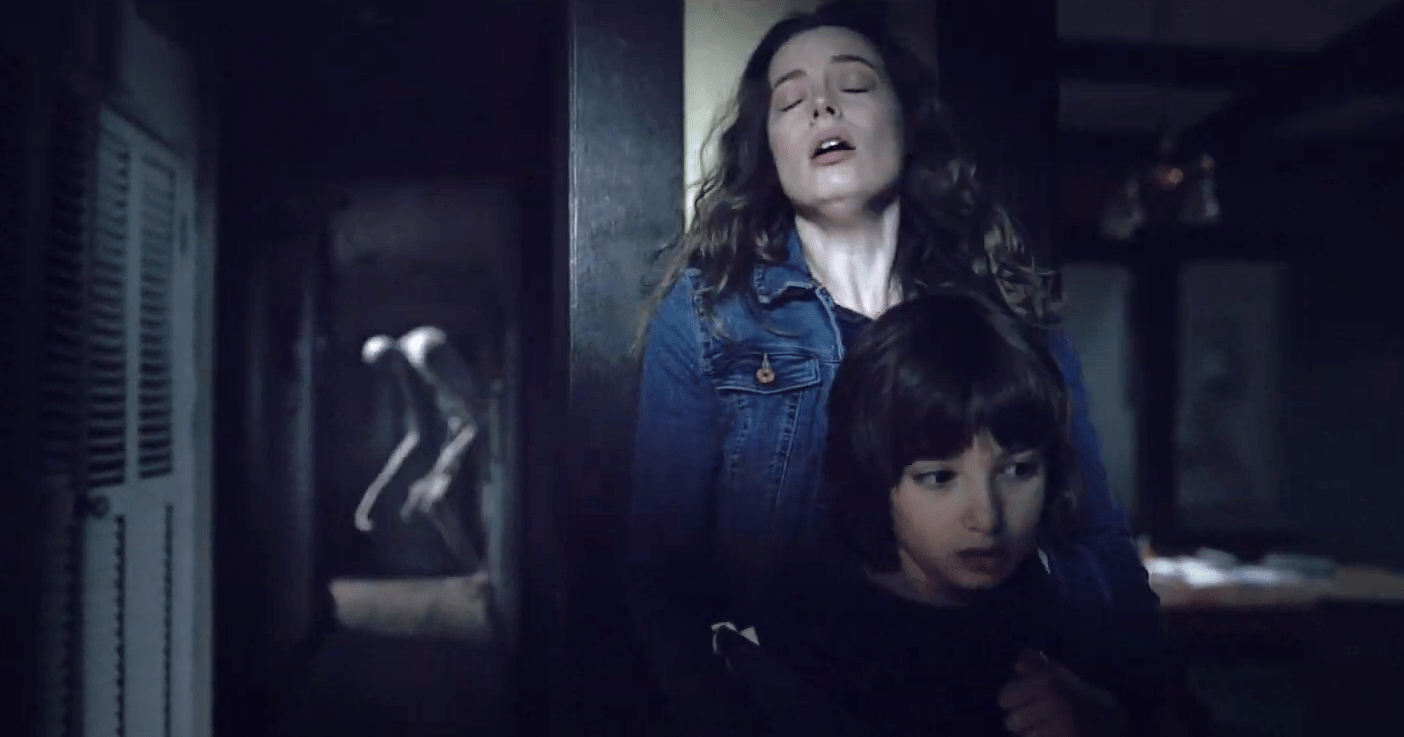What to Watch Verdict
'Come Play' follows safer instructions in terms of its horror, relying on the expected and familiar in ways that might not appeal to those craving something more.
Pros
- +
📱 Larry executes a scare or two.
- +
📱 Azhy Robertson is a standout.
Cons
- -
📱 Predictable and has a low ceiling.
- -
📱 Gets lost in its demonic rules.
Come Play is currently only available to watch in theaters. Due to the COVID-19 pandemic, we recommend checking it out at your local drive-in. If one isn’t available, please be sure to check out state and CDC guidelines before watching in an enclosed space.
Every few years, two movies released within months, maybe weeks, sometimes even days of another cause a disorienting sensation of déjà vu. Deep Impact vs. Armageddon. Hell Fest vs. Blood Fest. In 2020? That experience befalls Brandon Christensen’s Z and Jacob Chase’s Come Play, the latter hitting theaters just before Halloween (while the former lives on Shudder). Both films feature an “imaginary” friend that resembles a naked Slender Man and ogre lovechild, latches the entity onto a child, and duplicates the same type of invisible threats. Come Play only begins to veer when its (glancing) commentary against screen addiction becomes a narrative key throughout what’s generally a tame thriller rooted in online loneliness.
Oliver (Azhy Robertson) is a shy Autistic child who hides behind tablets and smartphones. Sarah (Gillian Jacobs) spends all her energy mothering Oliver during the daytime, shuttling him between school and appointments. Marty (John Gallagher Jr.) swoops in with presents after work as the “fun parent.” We have to assume this has led to tension in their relationship since Marty moves out of Sarah’s house while Oliver is asleep one night. Around this time, something tries to connect with Oliver through a digital storybook titled “Misunderstood Monsters,” about a creature named “Larry” who seeks friendship. The more anyone reads his tale aloud, the closer he comes to entering an interdimensional doorway into our world. Then, if you grab his hand, you’ll be Larry’s friend forever.
Chase’s screenplay creates Larry as a manifestation of isolation pains and how we’ve cut ourselves off from reality via obsessions with internet replacements. Maxime Alexandre’s cinematography grants us Larry’s vision before he’s freed, trapped behind glass windows illuminated by YouTube playlists or episodes of SpongeBob SquarePants. A voyeuristic glimpse that peers back as device users become more connected with streaming content than human relationships. Illusions of privacy and safety that form false friendships since it’s easier for Oliver to bask in the glow of a cartoon character’s antics than face children who don’t understand his tics or condition.
Oliver’s lack of classmate relationships, his parents’ split, and what makes Oliver “different,” all signifies an ideal target for Larry. The wavy-haired boy refuses to speak, depends on downloadable apps, and can’t properly convey prevalent dangers. As the haunts increase, Chase utilizes facial chat filters (much like Host) to reveal his demon before it enters Earth’s atmosphere. Larry first exists in his static realm, can manipulate electricity and move objects, but cannot “take” Oliver. Paranormal hauntings require device cameras to spy the gangly hunchback, only then revealing the CGI giant. Otherwise, frights rely on trash papers blowing against a translucent figure outside Marty’s parking attendant booth or Oliver’s usage of his father’s laser distance measurer. Come Play has more fun keeping Larry cloaked or hidden in plain sight than unleashing said beast, complete with the distressing noise of bones clicking as he shambles with thudded footsteps. It’s never particularly heart-pounding, but slightly unsettled nonetheless.
The problem is, and by “problem” I mean possible frustration for hardened horror fans, that Come Play is as simple as audiences can presume. There’s nothing ambitiously memorable outside Larry’s manipulation of existing media to communicate (Simon Pegg and Anthony Hopkins dialogue) or the one finale flash of Larry’s red-eyed, ferocious physicality worth your muffled gasp. John Gallagher Jr. and Gillian Jacobs nary perform beyond defined character boundaries. The mother who appears to be going mad, the father who doesn’t believe (at first). Azhy Robertson and his knee-high cast (Jayden Marine, Winslow Fegley, Gavin MacIver-Wright) share a scare-fueled sleepover sequence, but expectancies are the continuing normal. That’s not a total derailment, nor condemnation, just an evil-enough exploration that remains surface value.
Those viewers who only require haunted house structures, a looming presence, and a reliable leading performance from a child star? Come Play introduces enough lore and relevant themes that favor spooky October vibes. Its foreshadowing is evident, be it Oliver’s sticky-hand toy he slaps onto walls (his touch-tester) or assertions of technology’s negative side-effects, but scores points for creepy Larry’s crackly maneuvering and later attacks. Not everything fleshes out, as Larry’s abilities are always subject per scene (how can an apparition get locked inside a booth), which prevents marking Jacob Chase’s Halloween offering as a showstopper. Although, as an opening act? Or for viewers who can’t handle more horrific titles? It could be the start of a more intensely amplified, backloaded marathon.
The latest updates, reviews and unmissable series to watch and more!
Come Play will be available in theaters October 30th. Again, we hope you'll seek it out at a drive-in if it's available in your area. If you're curious if Matt thinks this - or any film - is worth watching in an enclosed space, you can find more on his stance here. The film does not currently have a set date for VOD.
Matt Donato is a Rotten Tomatoes approved film critic who stays up too late typing words for What To Watch, IGN, Paste, Bloody Disgusting, Fangoria and countless other publications. He is a member of Critics Choice and co-hosts a weekly livestream with Perri Nemiroff called the Merri Hour. You probably shouldn't feed him after midnight, just to be safe.


